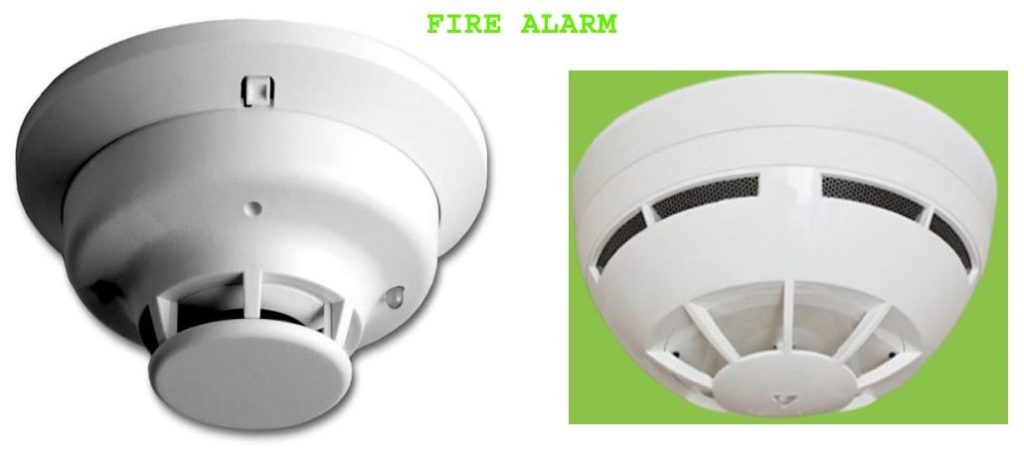Various types of fire alarms are available operating on principles of thermal expansion, thermoelectric sensitivity, thermal conductivity, or photosensitivity to detect the presence of smoke, increase in temperature, light intensity, or total radiation. Their types are Thermal expansion detectors. Radiant energy detectors. Light interference detectors and Ionisation detectors. They should be properly located depending upon their range. They simply give the alarm and cannot extinguish the fire. They make us alert for fire fighting. Though fire detection and alarm systems are separate systems the latter has to operate just after the former operates.
Two main functions of any fire detection system are
- To give alarm to start up extinguishing procedure, and
- To give early warning to area occupants to escape.
It is wrong to speak ‘fire detectors’. Actually, they detect sensible heat, smoke density, or flame radiation to operate before actual fire follows. Their ‘sensor’ detects a measurable quantity of these parameters. A decision-making device coupled with the sensor compares the measured quantity with a predetermined ‘ value, and when it is different, an alarm is sounded. A detector both detects and signals.
The human being is a good detector as he can act m a flexible way i.e. run away, put out the fire, or call the fire department. No other detector can work in such a selective manner.
Selection of the type of detector is important For example, low-risk areas need thermal detectors, a warehouse may have infrared and ionization detectors and a computer area requires ionization or combination detectors. Location and spacing should be determined to obtain the earliest possible warning. Sensitivity, reliability, maintainability, and stability are important factors for selection.
The firing process has four stages – incipient stage, smoldering stage, flame stage, and heat stage. Many types of fire detectors are available for various situations and are useful at different stages of a fire.
Thermal detectors are fixed temperature detectors, rate-compensated thermal detectors, rate of rising thermal detectors, line thermal detectors, and the bulb detection system.
Smoke detectors are of a photoelectric type and are of two classes – The beam photoelectric or reflected beam photoelectric detectors. Flame detectors are of infrared (IR) or ultraviolet(UV) type.
Ionization (combustion products) detectors are the single chamber or dual chamber ionization detector and the low-voltage ionization detector.
The Fire Alarm system may be separate to run manually or connected with fire detectors and operable automatically. All workers must be made aware of the sound pattern and its meaning. The fire alarm sound should be distinguishable from other sounds m that area. It should be clearly audible to all facility personnel. Sound for the beginning of fire and end of fire should be kept different.

